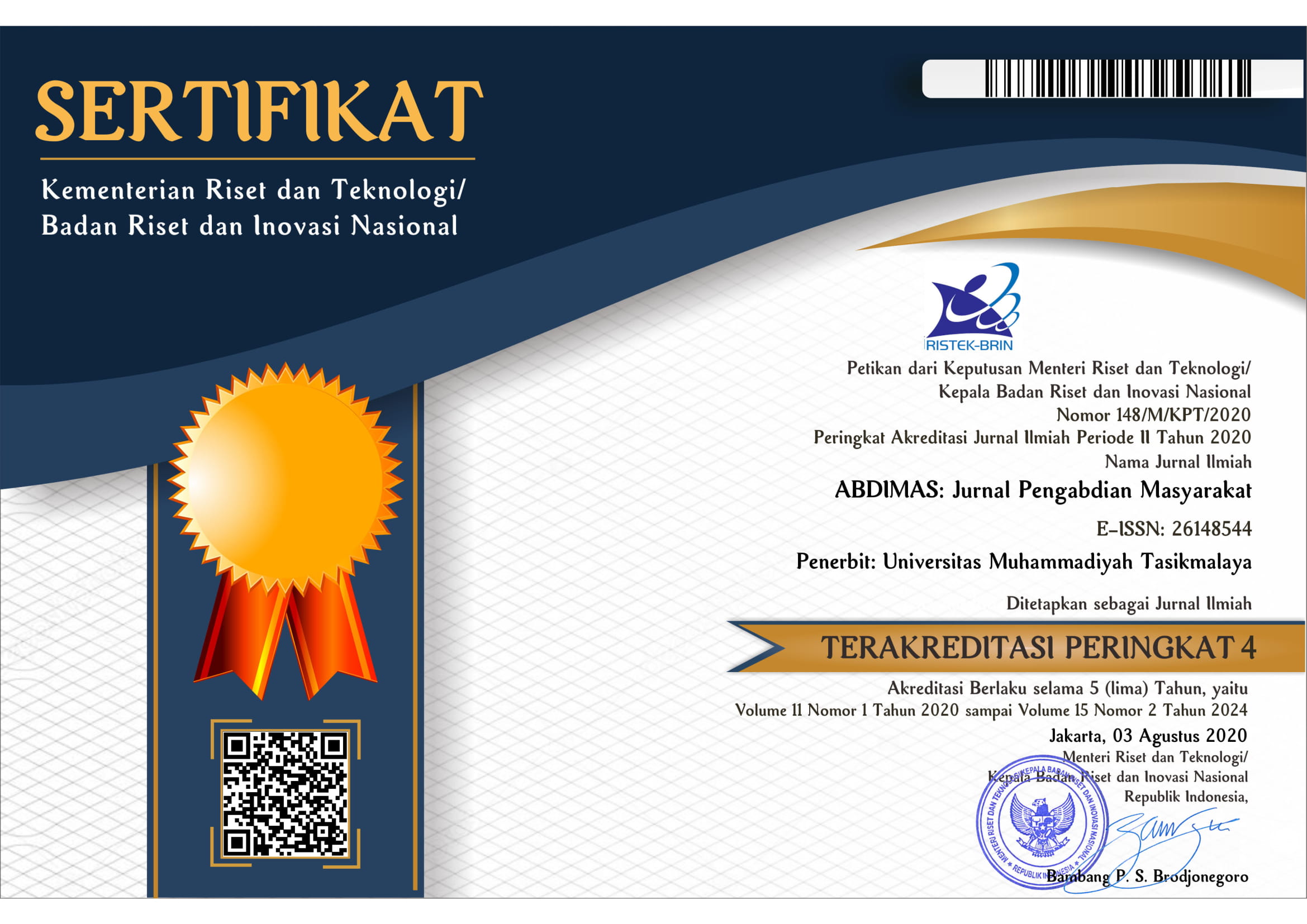Risk Factors Screening for Non-Communicable Diseases Among High School Students
DOI:
https://doi.org/10.35568/abdimas.v6i1.2892Keywords:
early detection; non-communicable diseases; teenagersAbstract
Currently there has been an increase in the incidence of NCDs on teenager. One of the efforts to respond to the increasing prevalence of NCDs is to develop and strengthen active early detection activities (screening). Early detection of NCDs is a way to determine the presence of NCD risk factors. Early detection is useful for finding early on the possibility that someone may have NCDs or have risk factors. Screening was conducted on 98 High School students. The screening results showed that 77 students (78.57%) did not exercise regularly, 62 students (63.27%) had the habit of sleeping late, 26 students (26.53%) had overweight, and 18 students (18.73%) had pre-hypertension. These results indicate a risk of NCDs in students. The early known risk factors for NCDs in the prevention and control can be carried out as early as possible. Therefore, screening, or early detection needs to be held in schools in collaboration with local health care facilities.
Downloads
References
Arisani, G., & Wahyuni, S. (2022). Virtual Learning Education about Adolescent Growth and
Development. Abdimas Umtas: Jurnal Pengabdian Kepada Masyarakat, 5(1).
de Gouw, L., Klepp, K. I., Vignerová, J., Lien, N., Steenhuis, I. hm, & Wind, M. (2010).
Associations between diet and (in)activity behaviours with overweight and obesity among
–18-year-old Czech Republic adolescents. Public Health Nutrition, 13(10A), 1701–
https://doi.org/10.1017/S1368980010002259
Kemenkes RI. (2018). RISKESDAS 2018.pdf. In Riset Kesehatan Dasar.
Kementerian Kesehatan Republik Indonesia. (2020). Gizi Remaja.
Https://Www.Kemkes.Go.Id/Article/Print/20012600004/Gizi-Saat-Remaja-TentukanKualitas-Keturunan.Html. https://www.kemkes.go.id/article/print/20012600004/gizi-saatremaja-tentukan-kualitas-keturunan.html
Roslianti, E., Firmansyah, A., Setiawan, H., Fitriani, A., Hamdani, D., Abdul Malik, A., Arisanty,
I. P., & Aulia Rahman, N. (2022). Health Education, Screening and Diabetic Foot Excercise
in Cimanggu District, Bogor. Abdimas Umtas: Jurnal Pengabdian Kepada Masyarakat ,
(2).
Setiawati, F. S., Mahmudiono, T., Ramadhani, N., & Hidayati, K. F. (2019). Intensitas
Penggunaan Media Sosial, Kebiasaan Olahraga, dan Obesitas Pada Remaja Di SMA
Negeri 6 Surabaya Tahun 2019. Amerta Nutrition, 3(3), 142.
https://doi.org/10.20473/amnt.v3i3.2019.142-148
Xu, G., Sun, N., Li, L., Qi, W., Li, C., Zhou, M., Chen, Z., & Han, L. (2020). Physical behaviors
of 12-15 year-old adolescents in 54 low-and middle-income countries: Results from the
Global School-based Student Health Survey. Journal of Global Health, 10(1).














